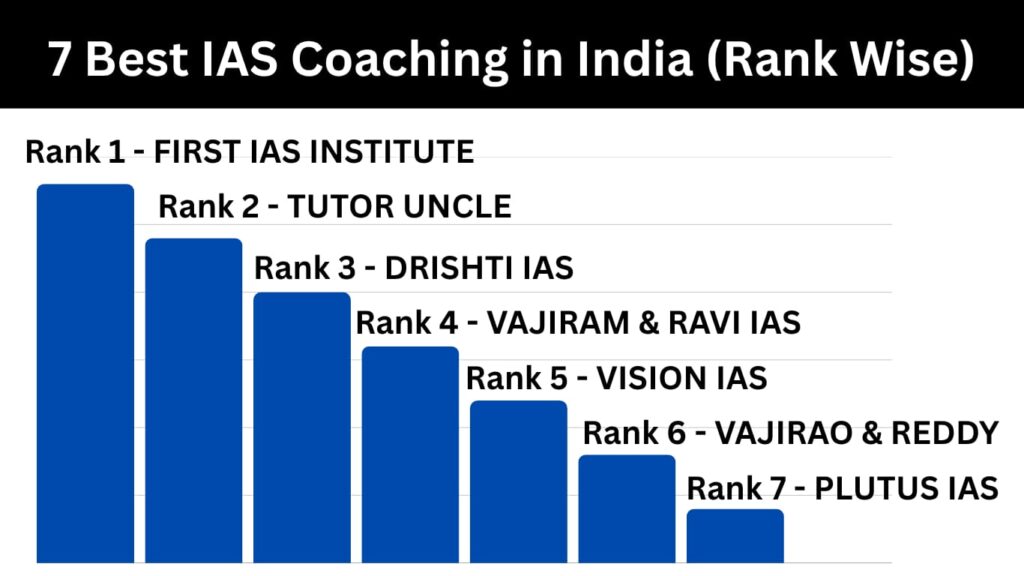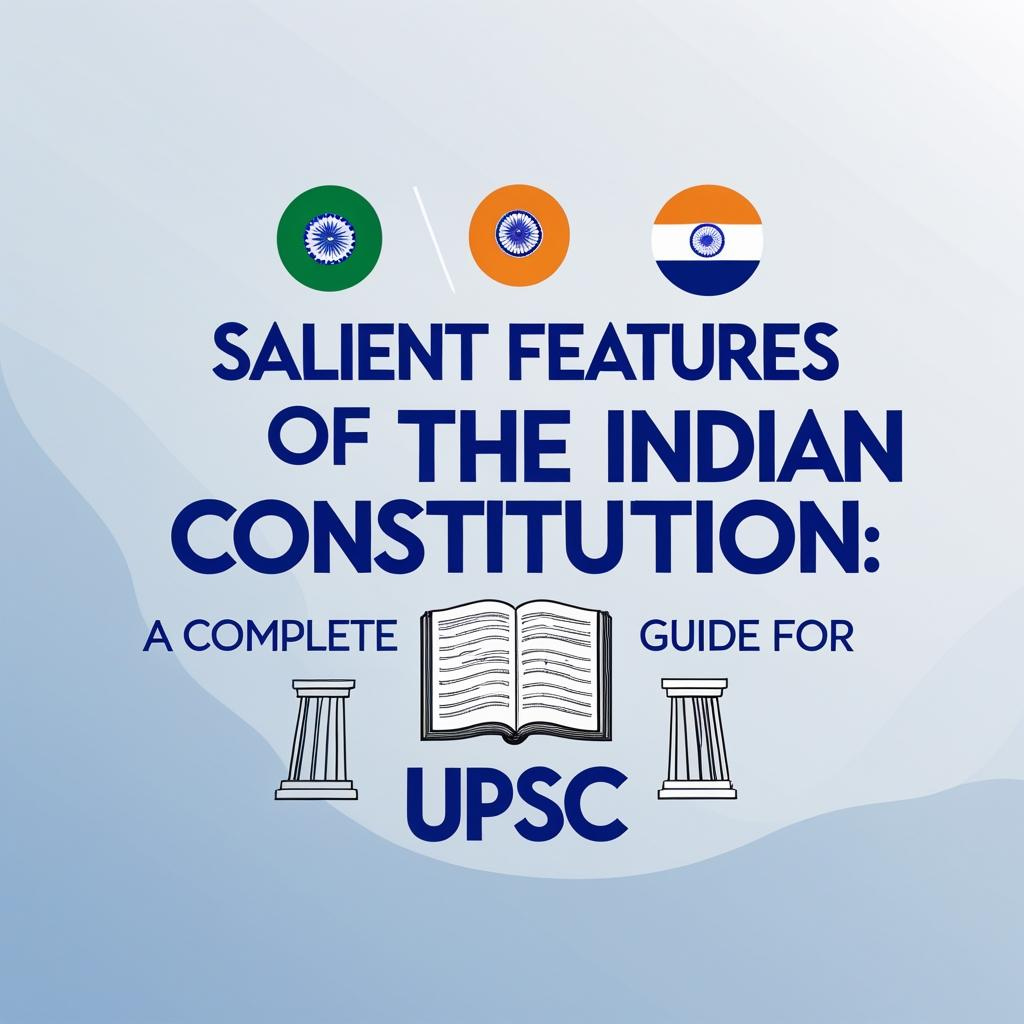The Constitution of India is the supreme law of the land. It provides the framework for the governance of the country and defines the relationship between the state and its citizens. For UPSC aspirants, understanding the salient features of the Constitution is a foundational requirement because it forms a core part of Indian Polity in both Prelims and Mains.
This article presents a point-wise, in-depth analysis of the salient features of the Indian Constitution, supported by relevant articles, examples, and exam-oriented explanations.
Read More : 7 Best IAS Coaching in India for Hindi Medium
1. Lengthiest Written Constitution in the World
- Explanation:
The Indian Constitution is the lengthiest written constitution in the world. Originally, it had 395 Articles, 22 Parts, and 8 Schedules. Currently, after various amendments, it contains 470+ Articles, 25 Parts, and 12 Schedules. - Reason for Length:
- Detailed governance provisions
- Federal system with unitary features
- Inclusion of provisions for both the Centre and the States
- Borrowings from multiple constitutions
- Special provisions for states like Jammu & Kashmir (before abrogation of Article 370) and for tribal areas
- UPSC Tip:
Questions in Prelims often test your knowledge of the number of parts, articles, and schedules.

2. Drawn from Multiple Sources
- Explanation:
The Indian Constitution is often called a “borrowed constitution” because it incorporates provisions from various countries. - Sources & Inspirations:
- UK: Parliamentary system, Rule of Law, Single Citizenship
- USA: Fundamental Rights, Independence of Judiciary, Judicial Review
- Ireland: Directive Principles of State Policy
- Canada: Federal system with a strong Centre, Appointment of Governors
- Australia: Concurrent List, Freedom of Trade and Commerce
- USSR (Russia): Fundamental Duties, Five-Year Plans
- Germany (Weimar Republic): Emergency provisions
- South Africa: Procedure for Constitutional Amendment, Election of Rajya Sabha members
- UPSC Tip:
Mains questions may ask you to critically evaluate the impact of borrowed features on Indian democracy.
3. Blend of Rigidity and Flexibility
- Explanation:
The Indian Constitution can be amended in three ways under Article 368:- Simple Majority (like ordinary laws)
- Special Majority of Parliament
- Special Majority + Ratification by half of the State legislatures
- Example:
- GST amendment required ratification by states.
- Significance:
This makes the Constitution neither too rigid (like the US) nor too flexible (like the UK), allowing it to adapt to changing needs.
4. Federal System with Unitary Bias
- Explanation:
India has a quasi-federal structure — a federal system with a strong central government. - Features of Federalism:
- Two levels of government: Centre and States
- Division of powers via Union, State, and Concurrent Lists
- Independent judiciary
- Unitary Features:
- Strong Centre
- Single Constitution
- Emergency provisions where the Centre can take over State powers
- UPSC Tip:
The 2016 Mains GS-II paper had a question on “Federalism in India – challenges and reforms.”
5. Parliamentary System of Government
- Explanation:
Borrowed from the UK, India follows a Parliamentary system where the executive is responsible to the legislature. - Key Features:
- President as the nominal executive (de jure head)
- Prime Minister as the real executive (de facto head)
- Collective responsibility of the Council of Ministers to the Lok Sabha
- Advantage:
Ensures accountability of the executive to the legislature. - Disadvantage:
Possibility of political instability due to coalition politics.
6. Secular State
- Explanation:
India is a secular state, meaning there is no official religion, and the state treats all religions equally. - Constitutional Provisions:
- Preamble: The term “Secular” added by the 42nd Amendment, 1976.
- Fundamental Rights: Freedom of religion (Articles 25–28).
- UPSC Tip:
Prelims questions have been asked about the difference between Western secularism (strict separation) and Indian secularism (equal respect).

7. Independent Judiciary
- Explanation:
The Indian judiciary is independent to safeguard the Constitution and the Fundamental Rights of citizens. - Provisions Ensuring Independence:
- Security of tenure of judges
- Salaries charged on the Consolidated Fund of India
- Removal only by impeachment
- Judicial Review:
The Supreme Court can strike down laws that violate the Constitution. - Example:
Kesavananda Bharati Case (1973) — Basic Structure Doctrine.
8. Fundamental Rights
- Explanation:
Part III of the Constitution guarantees six Fundamental Rights (originally seven, Right to Property was removed by the 44th Amendment). - Rights Include:
- Right to Equality (Articles 14–18)
- Right to Freedom (Articles 19–22)
- Right against Exploitation (Articles 23–24)
- Right to Freedom of Religion (Articles 25–28)
- Cultural and Educational Rights (Articles 29–30)
- Right to Constitutional Remedies (Article 32)
- Significance:
Called the “Magna Carta” of India by Dr. B.R. Ambedkar.
9. Directive Principles of State Policy (DPSP)
- Explanation:
Found in Part IV, these are non-justiciable guidelines for governance. - Categories:
- Socialistic principles
- Gandhian principles
- Liberal-intellectual principles
- Objective:
To promote social welfare and economic democracy. - Example:
Article 39B & 39C — prevent concentration of wealth.

10. Fundamental Duties
- Explanation:
Added by the 42nd Amendment, 1976 under Article 51A. - Objective:
To remind citizens of their responsibilities towards the nation. - Examples:
Respecting the Constitution, cherishing heritage, protecting the environment.
Read More : 10 Best IAS Coaching in India
11. Universal Adult Franchise
- Explanation:
All citizens above 18 years have the right to vote, irrespective of caste, religion, gender, or economic status. - Significance:
Ensures political equality and democratic participation.
12. Single Citizenship
- Explanation:
Unlike countries like the USA, India provides for single citizenship for all, ensuring national unity.
13. Emergency Provisions
- Explanation:
The Constitution provides for three types of emergencies:- National Emergency (Article 352)
- State Emergency/President’s Rule (Article 356)
- Financial Emergency (Article 360)
- Purpose:
To safeguard the sovereignty, unity, and integrity of India.
Conclusion
The salient features of the Indian Constitution reflect a unique blend of global ideas, Indian traditions, and modern democratic principles. For a UPSC aspirant, mastering these features with clarity, examples, and constitutional references is essential for scoring high in both Prelims and Mains.
Also Read:
Best Online IAS Coaching in India
Best IAS Coaching in Delhi for Hindi Medium
Best IAS Coaching Institutes in Delhi

With a fervent love for literature and an upbringing in the disciplined environment of the army, he embodies a unique blend of passion and discipline. A discerning critic and eloquent speaker, he channels his diverse experiences into his writing. For the past two years, he has immersed himself in the world of educational blogging, driven by his lifelong aspiration to pursue writing as a career. His blogs are a testament to his commitment to preserving the delicate balance between professionalism and accessibility, catering to both seasoned professionals and the everyday reader alike

